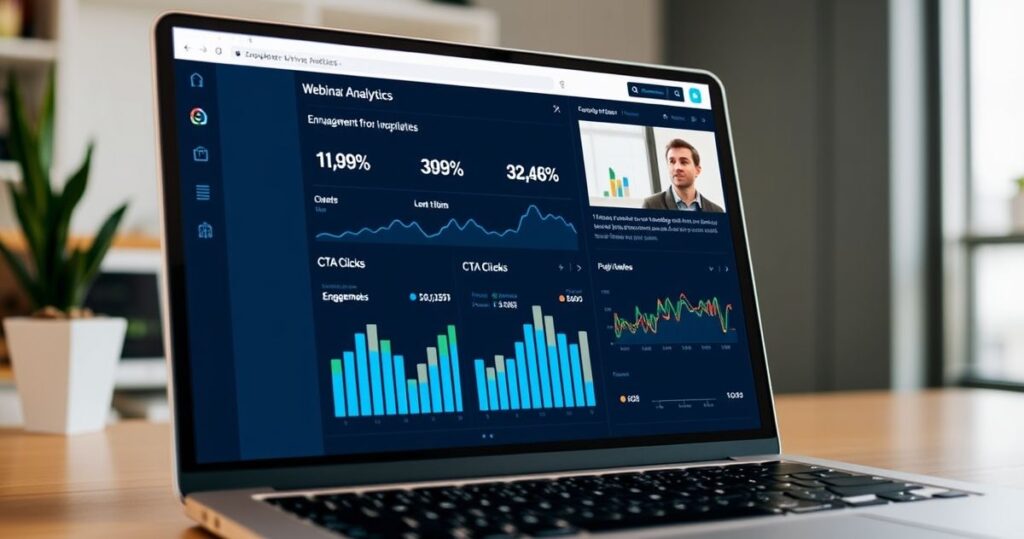How dynamic analytics boost real-time webinar conversions.

How Dynamic Analytics Boost Real-Time Webinar Conversions
In the fast-paced world of digital marketing, webinars have become a cornerstone for lead generation and audience engagement. But here’s the kicker: not all webinars are created equal. The difference between a mediocre webinar and a high-converting one often comes down to one critical factor—dynamic analytics.
Dynamic analytics refers to the real-time tracking and analysis of key performance metrics during a webinar. Unlike static post-event reports, dynamic analytics provide actionable insights while your webinar is still live. This allows marketers to make on-the-fly adjustments, optimize engagement, and ultimately, boost conversions. In this article, we’ll dive deep into how dynamic analytics work, why they’re essential, and how you can leverage them to supercharge your webinar performance.
Why Real-Time Insights Are a Game-Changer
Let’s be honest—traditional analytics can feel like looking in the rearview mirror. You get a detailed report after your webinar ends, but by then, it’s too late to fix anything. Dynamic analytics, on the other hand, act like GPS navigation for your webinar. They provide real-time data on:
- Audience engagement: Are attendees staying glued to their screens or dropping off?
- Interaction rates: How many people are asking questions, participating in polls, or clicking CTAs?
- Conversion trends: Are your offers resonating, or do they need tweaking?
For example, imagine you’re hosting a webinar on AI-powered tools. Halfway through, your analytics dashboard shows a 30% drop in engagement. With dynamic analytics, you can identify the issue (perhaps a technical glitch or a dull segment) and pivot immediately—maybe by introducing a quick poll or sharing a success story to re-engage your audience.
Key Metrics to Track in Real Time
Not all metrics are created equal. Here are the ones that matter most when it comes to boosting conversions:
- Engagement Rate: This measures how actively your audience is participating. Are they watching, clicking, or tuning out?
- Drop-off Points: Identify when and where attendees are leaving. Is there a pattern (e.g., during the offer pitch)?
- Poll and Survey Responses: Use these to gauge audience sentiment and adjust your messaging.
- CTA Click-Through Rates (CTRs): Are your calls-to-action effective, or do they need a revamp?
- Heatmaps: Visualize where attendees are clicking and spending the most time.
Take the case of a SaaS company that noticed a significant drop in CTRs during their pricing reveal. By using dynamic analytics, they discovered that their offer was buried in a dense slide. They quickly simplified the presentation and saw a 50% increase in conversions.
How to Use Dynamic Analytics to Optimize Webinars
So, how do you turn these insights into action? Here’s a step-by-step guide:
- Set Clear Goals: Before your webinar, define what success looks like. Is it lead generation, product sales, or brand awareness?
- Monitor in Real Time: Use a robust analytics dashboard to track key metrics as the webinar unfolds.
- Adapt on the Fly: If engagement dips, switch tactics—introduce a Q&A session, share a bonus offer, or tell a compelling story.
- A/B Test Offers: Use dynamic analytics to test multiple CTAs and see which one resonates most.
- Post-Event Analysis: Combine real-time insights with post-event data to refine future webinars.
For instance, a fitness coach hosting a webinar on weight loss noticed that attendees were highly engaged during the Q&A but dropped off during the sales pitch. By analyzing real-time data, they shifted their offer to a more conversational tone and doubled their conversion rate.
Challenges and Limitations
While dynamic analytics are powerful, they’re not without their challenges. Here are a few potential pitfalls and how to overcome them:
- Data Overload: Too much information can be overwhelming. Focus on the metrics that align with your goals.
- Technical Issues: Ensure your analytics tools are integrated seamlessly with your webinar platform.
- Decision Fatigue: Real-time adjustments require quick thinking. Train your team to make confident, data-driven decisions.
As with any tool, the key is to use dynamic analytics strategically—don’t let the data drive you crazy.
The Future of Webinar Analytics
The webinar landscape is evolving rapidly, and so are the tools we use to measure success. Emerging technologies like AI-powered analytics and predictive modeling are taking dynamic insights to the next level. Imagine a system that not only tells you what’s happening in real time but also predicts what will happen next.
For example, an AI-driven tool could analyze attendee behavior and suggest the perfect moment to present your offer—perhaps when engagement peaks or when attendees are most likely to respond.
Final Thoughts
Dynamic analytics aren’t just a fancy add-on; they’re a necessity for any marketer serious about maximizing webinar conversions. By providing real-time insights, they empower you to adapt, optimize, and succeed in ways that static analytics simply can’t match.
So, the next time you’re planning a webinar, don’t leave your success to chance. Embrace dynamic analytics and watch your conversions soar.



